$POL is the New $MATIC… Just Cheaper .. 4 Now
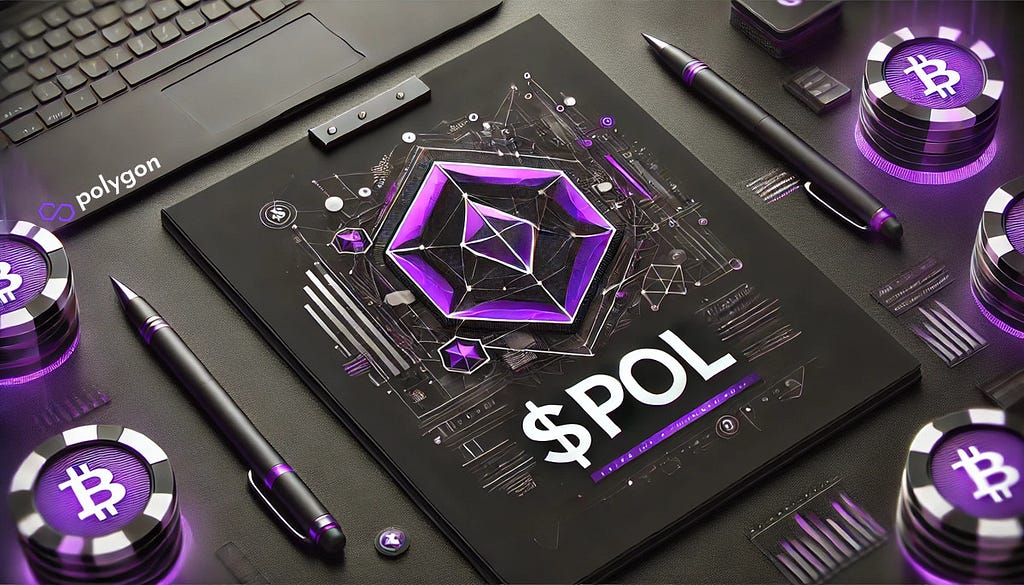
In the ever-evolving landscape of blockchain technology, new tokens and protocols are constantly emerging to improve on existing standards. One of the latest developments is $POL, a token designed to serve as the evolution of $MATIC, the popular token of the Polygon ecosystem. As Polygon looks to scale, innovate, and introduce a more efficient economic model, $POL is positioned as a lower-cost alternative that aims to retain the benefits of $MATIC while adding new features. Here’s a look at why $POL might just be the next big thing in the blockchain space — and why it might be easier on the wallet.
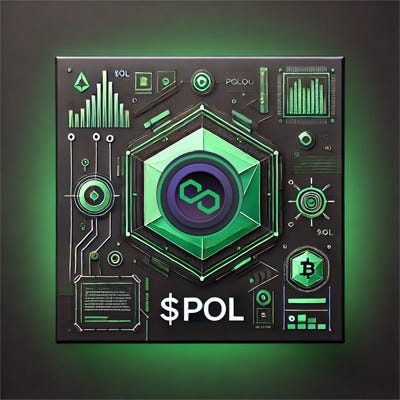
Understanding $MATIC and Polygon
In recent years, the Ethereum blockchain has established itself as a foundational layer for decentralized applications (dApps), DeFi (Decentralized Finance), and NFTs (Non-Fungible Tokens). However, as Ethereum’s popularity grew, so did its challenges. High gas fees, slow transaction times, and scalability limitations hindered the user experience, pushing developers and users to seek solutions. Enter Polygon and $MATIC — a powerful combination designed to make Ethereum’s potential accessible to a broader audience.
Origins and Purpose of Polygon
Originally known as the Matic Network, Polygon was launched in 2017 by a team of developers from India, including Jaynti Kanani, Sandeep Nailwal, and Anurag Arjun. They sought to address Ethereum’s scalability issues by creating a Layer-2 scaling solution. Polygon’s mission is to offer a framework for building interconnected blockchain networks, enabling Ethereum to grow without compromising security or decentralization.
In February 2021, Matic Network rebranded as Polygon to reflect a broader ambition — to become a “multi-chain” ecosystem that connects Ethereum-compatible blockchains. This transformation shifted Polygon’s scope from being a single-layer solution to a multi-layered network capable of supporting various scaling solutions. The Polygon ecosystem now includes technologies such as Plasma, zk-Rollups, Optimistic Rollups, and more, all designed to make Ethereum faster and more efficient.
What is $MATIC?
$MATIC is the native utility token of the Polygon ecosystem. Named after the network’s original name, $MATIC is central to the Polygon ecosystem’s operations and economic model. It powers several functions within the network, including:
Transaction Fees: Similar to “gas” on the Ethereum mainnet, $MATIC is used to pay for transactions on the Polygon network. With significantly lower fees than Ethereum, $MATIC provides an affordable alternative for users and developers.Staking and Security: $MATIC tokens are used for staking, which secures the network through a proof-of-stake (PoS) consensus mechanism. Validators (those who process and verify transactions) lock up $MATIC as collateral, earning rewards for their work. This PoS model allows Polygon to maintain a high level of security while processing transactions faster and cheaper than Ethereum’s mainnet.Governance: $MATIC token holders participate in network governance, allowing the community to vote on important decisions, such as protocol upgrades and changes to the staking structure. This decentralized decision-making process ensures that the ecosystem’s development is aligned with the interests of the community.How Polygon Solves Ethereum’s Scalability Problem
The goal of Polygon is to enhance Ethereum’s scalability by creating a network of interconnected chains. It operates as a Layer-2 solution, meaning it is built on top of the Ethereum blockchain but does not compromise Ethereum’s security and decentralization. Polygon does this through several innovative features and scaling solutions:
Sidechains: Polygon’s PoS sidechain is a separate blockchain that runs parallel to Ethereum. Transactions are processed on the sidechain, reducing the load on the Ethereum mainnet and lowering transaction fees. The sidechain periodically submits data back to Ethereum, ensuring that security is maintained.Plasma Chains: Plasma is a framework for creating “child” blockchains that interact with the main Ethereum chain. It enables Polygon to bundle multiple transactions and submit them as a single transaction on Ethereum, further reducing congestion and costs.Rollups: Polygon’s ecosystem also supports rollup technology, which allows for even more efficient bundling and compression of transactions. Zero-Knowledge Rollups (zk-Rollups) and Optimistic Rollups are technologies that allow transactions to be validated off-chain and then submitted to the Ethereum mainnet, preserving security while reducing costs.Interoperability with Ethereum: One of Polygon’s key strengths is its compatibility with Ethereum. Developers can deploy dApps on Polygon with little to no code modifications, giving them access to Ethereum’s developer and user base without sacrificing performance or affordability.The Rise of $MATIC
As Polygon grew, $MATIC quickly gained traction, becoming one of the most popular and widely used tokens in the crypto space. The success of $MATIC is tied directly to the increasing demand for scalable and affordable blockchain solutions, particularly as more dApps, DeFi platforms, and NFT projects seek alternatives to high Ethereum gas fees.
Key Reasons Behind $MATIC’s Success:
Affordability: With much lower transaction fees than Ethereum, $MATIC made blockchain more accessible to users and developers.Speed: Polygon’s PoS chain can process transactions in just a few seconds, addressing Ethereum’s slow transaction speeds.User and Developer Adoption: Popular dApps and DeFi protocols, including Aave, SushiSwap, and OpenSea, have integrated with Polygon, bringing millions of users to the platform.Challenges and Opportunities for Polygon and $MATIC
As the Polygon network expanded, the need for a more scalable, sustainable economic model became evident. $MATIC’s limited utility and fixed supply presented some challenges in scaling the network for future demand. Polygon’s network is growing rapidly, but with that growth comes the need for a token that can support the increasing demand for governance, staking, and transaction fees across a more diverse ecosystem.
To meet these challenges, Polygon introduced $POL — a new token designed to take $MATIC’s place, with additional features to make it more adaptable to a multi-chain environment.

Introducing $POL: The Next Generation
As Polygon grows into a multi-layer, interoperable ecosystem, it faces challenges related to scalability, governance, and sustainability. While $MATIC served as an effective utility token in Polygon’s early years, the network’s expanding use cases have created demand for a token that can handle a more complex and decentralized ecosystem. $POL is designed to be that token, representing a significant step forward in Polygon’s mission to create a fully scalable and interoperable Ethereum Layer-2 solution.
Here’s how $POL builds on $MATIC and what new features it brings to the table.
The Purpose of $POL
$POL is a new token that will replace $MATIC as the primary token of the Polygon ecosystem. It has been designed to fulfill three core functions: supporting interoperability, enhancing governance, and promoting economic sustainability. Unlike $MATIC, which was largely used for staking, fees, and governance, $POL is engineered to handle a wider range of roles within the ecosystem.
The introduction of $POL is part of Polygon’s broader strategy to transition from a single-solution Layer-2 platform to a comprehensive, multi-chain ecosystem that can support a variety of Ethereum scaling solutions and meet the demands of Web3 applications.
Key Features and Innovations of $POL
Here are the standout features of $POL that make it a “next-generation” token:
1. Multi-Chain Interoperability
One of the main limitations of $MATIC was that it primarily supported Polygon’s PoS (Proof of Stake) chain. As Polygon evolves to support multiple Layer-2 solutions (such as zk-rollups, Optimistic rollups, and various other scaling methods), a more adaptable token was needed to handle cross-chain interactions.
$POL is designed to be interoperable across all of Polygon’s Layer-2 solutions, creating a seamless bridge for users and developers. This multi-chain interoperability means that users can interact with different Polygon chains (such as the zkEVM chain or future solutions) using the same $POL token, making it easier to transfer assets, participate in governance, and pay for fees across various Polygon networks.2. Enhanced Governance
With the introduction of $POL, Polygon aims to decentralize its governance further by expanding the scope of community participation. Currently, $MATIC holders can participate in governance to some extent, but $POL is expected to bring a more structured governance model that allows for broad community involvement.
Under this new model, $POL holders will have a more substantial say in decision-making processes. This could include protocol upgrades, voting on ecosystem development funds, and even the ability to influence key protocol parameters. This inclusive governance framework is designed to ensure that the community has a direct role in shaping the future of Polygon.3. Sustainable Staking Model
A unique innovation introduced with $POL is its enhanced staking architecture. With $MATIC, staking was largely limited to securing the Polygon PoS chain. However, $POL introduces a staking model that allows users to contribute to the security of multiple chains within the Polygon ecosystem.
This means that validators and delegators can stake $POL to secure different Layer-2 solutions (like zk-rollups) within Polygon. This dynamic staking approach not only makes the network more resilient but also offers greater incentives to validators, who can earn rewards across multiple protocols by staking $POL.4. Improved Tokenomics
The tokenomics of $POL have been redesigned with long-term growth and sustainability in mind. While $MATIC has a fixed supply, $POL will likely adopt a flexible supply model designed to meet the demands of an expanding, multi-chain ecosystem. This approach will help Polygon scale economically without encountering the inflationary issues that often arise with fixed-supply tokens.
By incorporating a dynamic supply model, Polygon can adjust the supply of $POL based on network demand. This flexibility allows for more sustainable growth and a balanced economic structure, avoiding the pitfalls of oversupply or excessive scarcity that could otherwise limit adoption and functionality.
How $POL Will Be Used
$POL will have several essential roles within the Polygon ecosystem, covering various aspects of utility and security:
Transaction Fees: As with $MATIC, $POL will be used to pay for transaction fees across the entire Polygon ecosystem. However, given $POL’s interoperability across multiple chains, users will have a unified experience, paying fees in $POL regardless of which Polygon chain they are interacting with.Staking and Security: Validators in the Polygon network will stake $POL to secure multiple Layer-2 chains. This new staking mechanism will enhance security while making it easier for validators to earn rewards from different chains. This also provides a financial incentive for more validators to join the network, improving decentralization and security.Governance Voting: $POL holders will participate in a more expansive governance model. Unlike $MATIC, where governance is somewhat limited, $POL will empower holders to vote on various proposals, including updates to the protocol, ecosystem fund allocations, and new developments in the Polygon ecosystem. This will make governance more democratic and accessible to the community.Cross-Chain Utility: By supporting all of Polygon’s Layer-2 solutions, $POL will serve as a unifying currency within the ecosystem. Users will be able to transfer assets between different Polygon chains without needing to convert tokens, making it easier to move capital and assets within the network.Transitioning from $MATIC to $POL
Polygon has planned a smooth transition from $MATIC to $POL to ensure that current token holders can easily upgrade to the new token. Here’s what the transition might look like:
Token Swap: Polygon will likely implement a straightforward token swap process, where $MATIC holders can convert their tokens to $POL. This swap process is expected to be simple and accessible, allowing $MATIC holders to seamlessly transition to the new system.Community Education and Support: Polygon plans to educate the community about the benefits and uses of $POL, making sure that users and developers understand how to navigate the new token economy. Resources, guides, and community support will be provided to make the transition as smooth as possible.Gradual Phase-Out of $MATIC: While $POL will replace $MATIC as the primary token, Polygon is likely to implement a phased transition, giving the ecosystem ample time to adapt to the new token. This means that $MATIC will not be immediately obsolete, providing users and developers with flexibility during the transition.The Vision for $POL and Polygon’s Future
$POL is more than just a replacement for $MATIC; it represents Polygon’s vision for a scalable, interoperable, and sustainable multi-chain future. With $POL, Polygon is positioning itself as a fully-featured ecosystem that can support the next generation of dApps, DeFi, NFTs, and more. The new token enables Polygon to:
Adapt to Growing Demand: By introducing a more flexible token with robust staking and governance capabilities, Polygon can better meet the demands of a rapidly growing ecosystem.Support New Technologies: As blockchain technology continues to evolve, $POL will enable Polygon to integrate new scaling solutions and innovations, keeping the ecosystem at the forefront of blockchain development.Empower the Community: The enhanced governance model puts more power in the hands of the community, aligning the network’s development with the interests of its users and developers.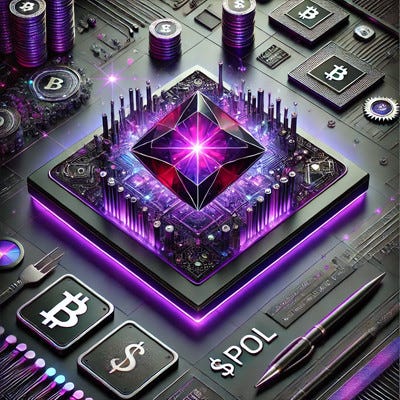
Why $POL is Cheaper
So, why might $POL be cheaper? Here are some factors:
Early Stage Pricing: Since $POL is a new token, its market value is currently lower than $MATIC, making it a more affordable entry point for investors. As adoption grows, $POL’s value could rise, but for now, it’s accessible to a broader base.Efficient Transaction Costs: As Polygon refines its technology stack, $POL transactions are expected to incur lower fees than $MATIC transactions, making it a cost-effective choice for those using the network.Lower Network Congestion: Since $POL is designed to support multiple Layer-2 solutions, this can spread out traffic and potentially lower the per-transaction cost across the ecosystem.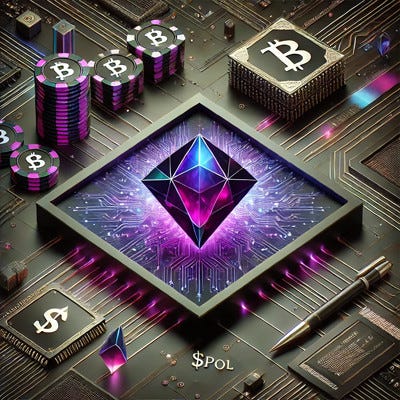
Advantages of $POL Over $MATIC
Future-Proofed for Scaling: With $POL, Polygon is creating a token that can adapt as blockchain technology advances, allowing for smoother transitions to emerging Layer-2 solutions.Greater Decentralization: $POL is expected to enhance governance by involving more community members in decision-making.Cost Efficiency: Lower initial prices combined with an optimized fee structure make $POL more attractive to users and developers who want to build without high costs.How to Transition from $MATIC to $POL
As the ecosystem transitions, current $MATIC holders will likely have options to exchange their $MATIC tokens for $POL. This swap will not only allow users to upgrade to the new token but will also create a smoother transition for those involved in staking and governance.

Final Thoughts
The introduction of $POL signifies an important shift for Polygon and its ecosystem, aiming to bring scalability and sustainability to new heights. $POL’s lower entry cost offers an opportunity for more users to get involved in the ecosystem, and with a model designed for long-term growth, it’s an attractive option for developers, investors, and users alike.
For now, $POL may indeed be “the new $MATIC… just cheaper,” but if it accomplishes its goals, it has the potential to become something even greater. As always, keep an eye on the developments, and consider your investment strategies wisely. The future of Polygon, and possibly the broader blockchain world, is about to change with $POL.
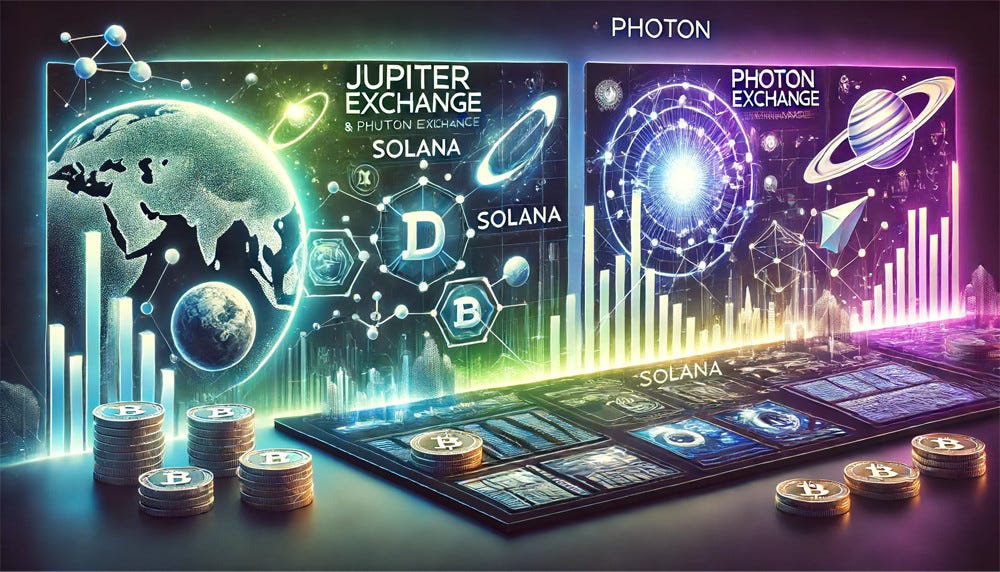
Here are some links where you can learn more about the $POL token:
Polygon’s Official Website on POL — Provides detailed information on the role of POL in the Polygon ecosystem, including its applications and upcoming developments in Polygon 2.0.Bitrue POL Trading Page — Tracks the latest market data for $POL, including live price updates, market cap, and trading volumes, as well as buying options.CoinGecko’s Overview of POL — Discusses the technical aspects of POL, including its role in Polygon’s staking and governance, and outlines the four-layer architecture of Polygon 2.0.Polygon’s Blog on POL Transition — Offers insights into the transition from MATIC to POL, explaining its enhanced functionality for staking and security across multiple chains within Polygon’s ecosystem.CoinMarketCap POL Profile — Provides comprehensive data on POL, including market insights, historical data, and circulating supply.These links cover a wide range of information about $POL, from technical details to real-time market stats and future ecosystem plans.
Non KYC Exchanges
Non-KYC (Know Your Customer) exchanges are platforms that allow users to trade cryptocurrencies without requiring extensive personal information or identity verification. These exchanges appeal to users who prioritize privacy and want more control over their trading activities without revealing their identities.
Key Benefits of Non-KYC Exchanges
Enhanced PrivacyOne of the main attractions of non-KYC exchanges is the ability to trade and invest while maintaining privacy. Many crypto enthusiasts view privacy as a fundamental right, especially in a decentralized ecosystem. By avoiding the KYC process, users can protect their personal information from potential data breaches and minimize their digital footprint.Access to Leverage Trading
Non-KYC exchanges often provide leverage trading opportunities, allowing users to open larger positions than their account balance would usually permit. This can be highly advantageous for experienced traders looking to amplify their gains. Exchanges like Bitrue offer leverage trading options on various assets, giving traders the flexibility to capitalize on market volatility without the delays or restrictions of the KYC process.Staking and Earning Potential
Beyond trading, some non-KYC exchanges also offer staking and earning programs, enabling users to earn interest or rewards on their crypto holdings. Platforms like Bitrue allow users to stake certain cryptocurrencies or participate in yield-earning opportunities, giving them passive income options without the need to undergo KYC verification. This can be a major advantage for users who want to grow their holdings while retaining control of their data.
NO KYC Exchanges W/ $POL Spot and Futures Trading
BitrueMargexLBANKBitMartCoinExMexCOrangeX$POL is the New $MATIC… Just Cheaper … For was originally published in The Capital on Medium, where people are continuing the conversation by highlighting and responding to this story.


 1 week ago
1
1 week ago
1 
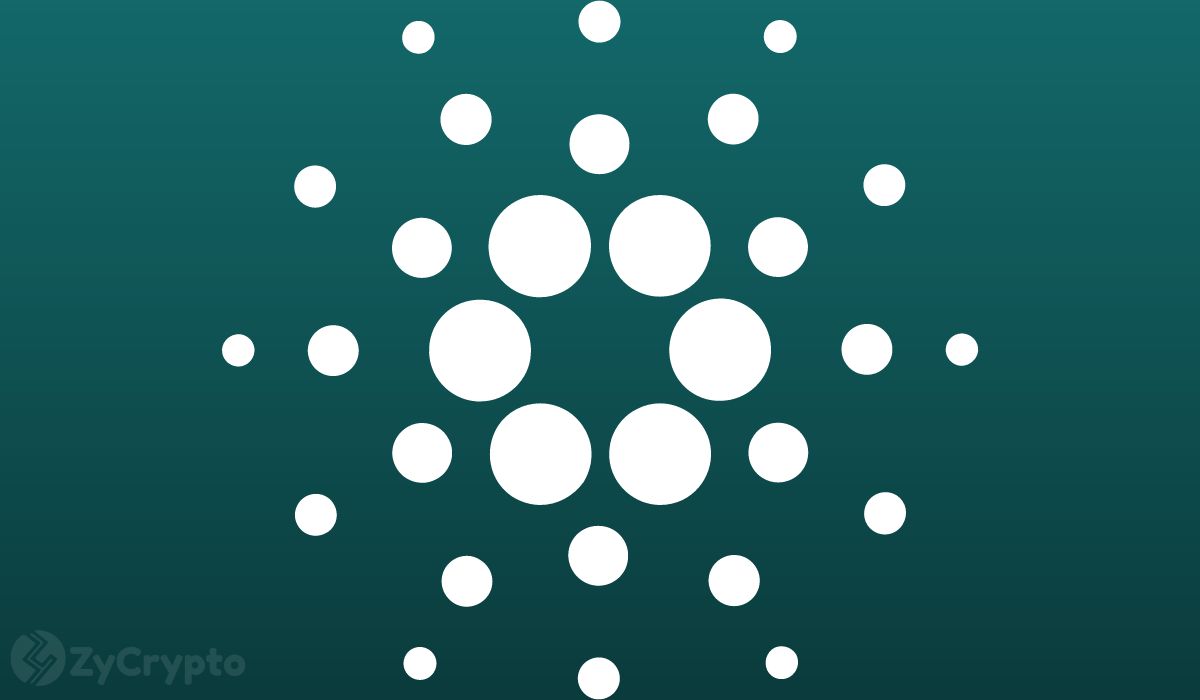








 Bengali (Bangladesh) ·
Bengali (Bangladesh) ·  English (United States) ·
English (United States) ·